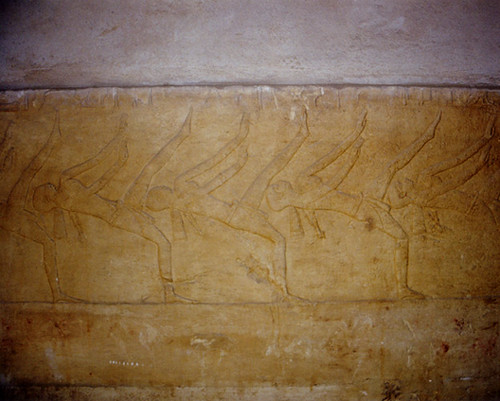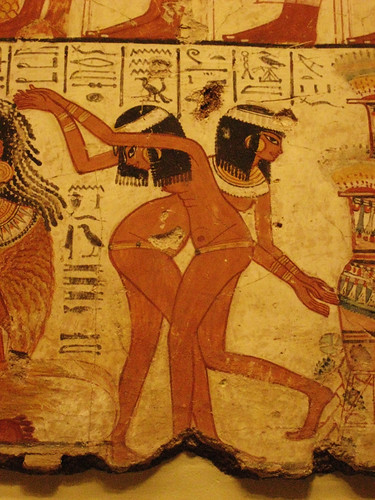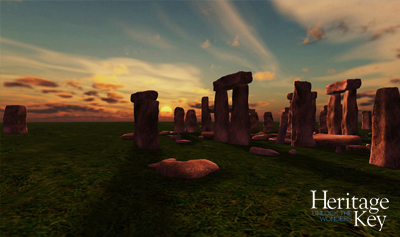 As a child growing up in Turkey, belly dancing was a big part of the ‘dress up and play’ life of every little girl, and most girls learnt how to dance either from their mums or other women in the family. At gatherings such as weddings and parties, women would rush to show off their talents to the rhythm of the drum-based oriental music. Even now, many young women practice the ancient dance, often in modern guise. Perhaps modern divas like Shakira have something to do with it.
As a child growing up in Turkey, belly dancing was a big part of the ‘dress up and play’ life of every little girl, and most girls learnt how to dance either from their mums or other women in the family. At gatherings such as weddings and parties, women would rush to show off their talents to the rhythm of the drum-based oriental music. Even now, many young women practice the ancient dance, often in modern guise. Perhaps modern divas like Shakira have something to do with it.
Described as the ‘world’s oldest dance’, over the years, belly dancing has became a very sensual display, practised by scantily-clad dancers draped in silk, tassles, and sparkles, with their belly – the central part of the dancer – exposed. Now most commonly associated with Turkey and Egypt, the roots of the dance are nebulous. From where did these sensual moves originate, and how different is the modern version than its ancient incarnation?
The Dancers of Ancient Egypt: More Skin – Less Bling
 A report by Patricia Spencer, Director of the Egypt Exploration Society, first published by Raqs Sharqi Society, describes the role of dance in Ancient Egypt. The report claims dance was a common element in religous ceremonies, and sometimes used in the harvest season to celebrate yields. “From their work it can be seen that ancient Egyptian women enjoyed dancing just as much as their descendents today,” she says.
A report by Patricia Spencer, Director of the Egypt Exploration Society, first published by Raqs Sharqi Society, describes the role of dance in Ancient Egypt. The report claims dance was a common element in religous ceremonies, and sometimes used in the harvest season to celebrate yields. “From their work it can be seen that ancient Egyptian women enjoyed dancing just as much as their descendents today,” she says.
Drawings and engravings fom the tombs and temples of Ancient Egypt suggest professional dancers existed in the empire. These dancers would perform in all-female groups, called “khener”, and there is evidence that women would also dance in tombs for the deceased, and at familybanquets.
Dancing in temples, however, was a different matter. Both male and female dancers took part, although Spencer suggests these dances were more ritualistic, and less sensuous than the all-female versions.
Dancers usually wore nothing but a simple cloth or leather around their hips and a white headdress, with the rest of their body bare.
 In Ancient Egypt cymbals attached to their fingers – called zills – were used widely as musical instrument to keep the rhythm which were similar to those used by belly dancers today.
In Ancient Egypt cymbals attached to their fingers – called zills – were used widely as musical instrument to keep the rhythm which were similar to those used by belly dancers today.
Travelling Dancers
Egypt was always open to the influence of other cultures, especially those of the Greeks and Romans. But there is evidence the dance predates even these influences.
In fact according to worldbellydance, the dance originated 6,000 years ago in Mesopotamia, and spread across Rome, North Africa, Spain and India – where travelling gypsies then carried the dance further out to Afghanistan, Turkey, Europe and then Egypt.
We see evidence of belly dancing – or the ‘Dance of the East’ ( Raqs Sharqi) – in the Christian bible in the case of Salome. As she dances for her stepdad Herod the movements described are reminiscent of belly dancing.
The dance I practiced as a child, which is still seen in Turkey today, was probably most influenced by the gypsy ‘Chengi’s of 15th Century Turkey. However, the influence of the ancient Egyptians and their wide-ranging predecessors is still discernable. The movements have probably changed very little, and the sensuality prevails, although most dancers will be grateful that the outfits offer a little more support these days!
If you enjoy belly dancing like I do you can see many performances from the likes of BDSS, or take up belly dancing yourself for exercise or just for fun. It’s great fun to strengthen your belly muscles to the rhthyms of Oriental Music. The ancient Egyptians did look rather slim on those drawings, so it must work!



